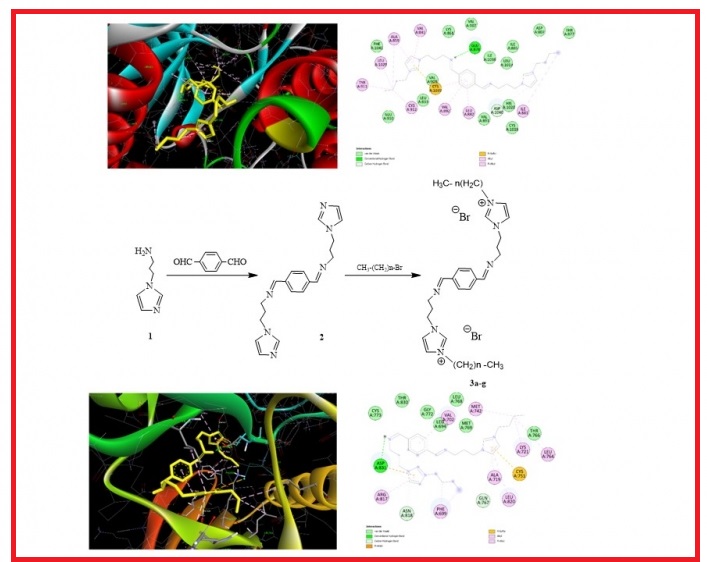JOURNAL 3014
Organic Communications
Year: 2024 Issue: 1 January-March
p.23 - 37
Viewed 1929 times.
GRAPHICAL ABSTRACT

ABSTRACT
In this study, bis-Schiff bases with imidazole (2) and bis-imidazolium liquids (3a-g) were synthesized. The new compounds were characterized by Fourier transform infrared (FTIR), proton and carbon-13 nuclear magnetic resonance spectroscopy (1H- and 13C- NMR). The MTT assay was performed by our research group to measure the anticancer effect of the synthesized molecules on cell proliferation (NCI-60 screening method). Accordingly, when molecules 3e, 3g and 3f were compared with other molecules and 5-Fluorouracil (5FU) (positive control), they were found to exhibit potent anticancer activity against all cancer cell lines ((Growth inhibition (GI50): 1.0 - 1.82, total growth inhibition (TGI): 1.09 - 4.79 and lethal concentration (LC50): 2.74 – 59.5 µg/mL), but also a strong cytotoxic effect on normal lung cells Beas2B and normal cartilage cells HC (GI50: 1.0 - 1.28, TGI: 1.03 - 2.61 and LC50: 1.77 - 41.7 µg/mL). The in vitro antimicrobial activity of the synthesized compounds was evaluated against a range of microorganisms, including four Gram-positive bacteria (B. cereus, S. aureus, E. faecalis, B. subtilis,), four Gram-negative bacteria (Y. pseudotuberculosis, P. aeruginosa, E. coli, K. pneumoniae) and two yeast-like fungi (C. albicans, C. tropicalis). Molecular docking calculations were performed to investigate the ligand-protein interactions between the compounds and the Epidermal Growth Factor Receptor (EGFR) and the Vascular Endothelial Growth Factor Receptor (VEGFR1).
KEYWORDS- Bis imidazolium ionic liquids
- anticancer effects
- antimicrobial activity
- molecular docking